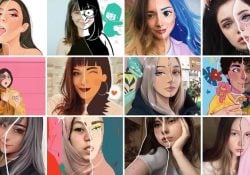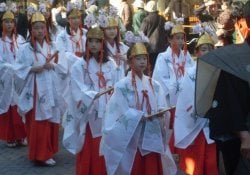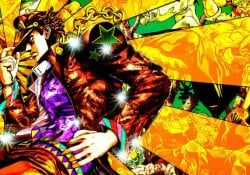Do you know Japanese gangs and delinquents? There are several types of them that even received names and titles like Yankii, Bosozoku and Sukeban. In this article, we will see everything about Japanese delinquents, especially about those mentioned.
Some do not belong to gangs and may act differently on the streets or bullying in schools. It doesn't matter if a Japanese delinquent is a school bully, a gang member, and a biker. Let's see different types!
All end up having things in common and still differ quite a bit from Western delinquents. Some may not seem like delinquents or act that way, so we need to observe and get to know them.
Anime, dramas and movies show a lot the style and look of a standard delinquent and how they usually act. They often convey a feeling of anger and cannot control themselves. Some often dye their hair, do stunning hairstyles, and wear unusual bleached blouses.
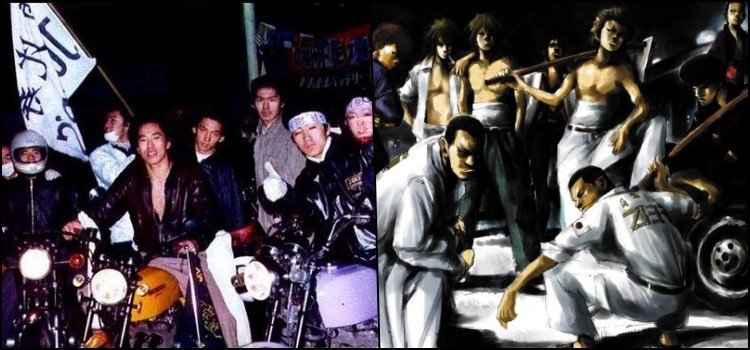
Índice de Conteúdo
Types of offenders in Japan
Criminals in Japan are often called yankii (ヤンキー), a reference to the word yankee that Americans use to refer to citizens of different ethnicities. Probably the Japanese adopted this word due to the peculiar tendencies of the Japanese delinquent subculture.
Yankii was already used in Japan to refer to the poor of Kansai at the time of 1975. Soon the term was also used to refer to the Japanese who imitated the Americans, until finally the term focused on the definition of rebellious youths who do not follow the norms. and school standards. The film Kamizake Girls (Shimotsuma Monogatari) portrays the life of the Yankii well.
There are many different subcultures, gangs and types of delinquents that can be categorized and listed. Below we will briefly share some terms from the Japanese language and what kind of delinquents this term refers to.
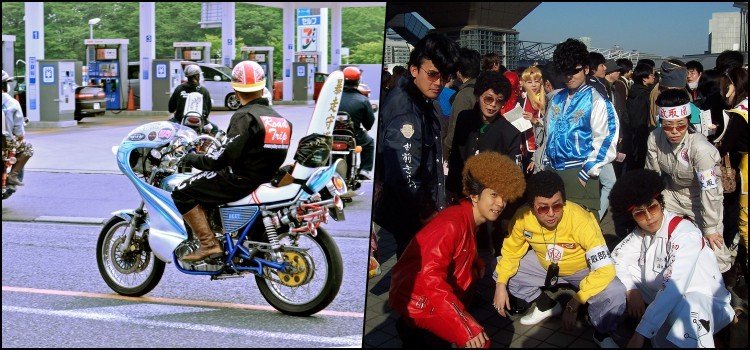
- Bosozoku - They are wild biker gangs;
- bench - A leader of a group of delinquents;
- Tsubari – Term used for the bad boys of the 1970s;
- Sukeban – Refers to a group of delinquents, women or a boss;
- Yakuza - Refers to the Japanese Mafia;
- Gyaru - A style of fashion and culture that he can to be kind of aggressive;
- Hashiriya – Literally means street runner, a movement similar to bosozoku;
- Ijime - Literally means bullying, something that happens in Japanese schools.
- fury – It also means delinquent or some bad person;
- Chinpira – Little yakuza apprentice, punk, delinquent girl;
Identifying Gang Youth in Japan
There are so many characteristics about Japanese youth gangs that it is difficult to accurately describe all the details. You can easily identify a young person belonging to a group of delinquents by observing their behavior.
The yankii or any other gang subculture has a custom of crouching down and standing in a position called unko zuwari or yanki zuwari. It looks like a faecal position where the person is with the ass to the floor and with the legs spread showing some kind of attitude. You've probably already seen it in an anime.
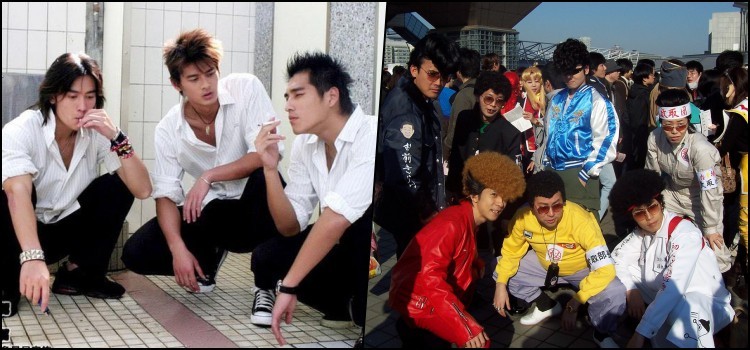
Delinquents who follow a culture often wear bandanas, surgical masks, piercings and jewelry in excess. In addition, some tuck their pants into their boots or roll them around the knee.
Others even get scars and tattoos to look hardcore. Female delinquents often wear a messy school uniform, scarf, loose socks, and a skirt that is too short or too long.
The behavior of Japanese delinquents is the same as you would expect: they like to fight, disturb the peace and don't get along with society. His main interests involve baseball, motorcycles, wrestling and martial arts.
A person doesn't necessarily have to look or style to be a delinquent, you'll tell by his attitude. Yakuza don't usually get along with young delinquents, they consider themselves professionals, while young people just want to be punk.
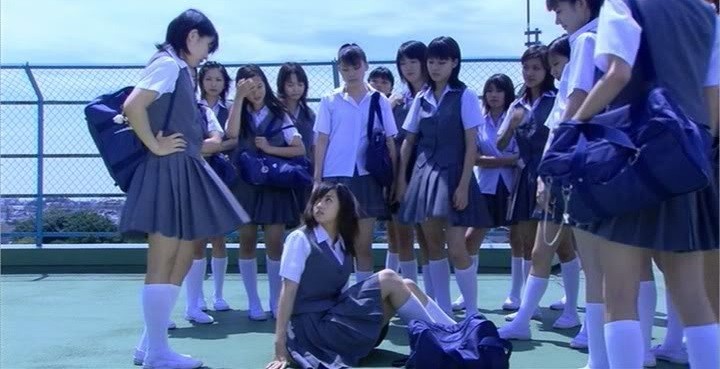
Even nice and fun people can be considered delinquents in Japan. Anyone who doesn't obey the rules, can't get along with others or looks different is often called furyou (不良), which can be translated as something bad, inferior, and delinquent.
We recommend reading:
Bosozoku - The Young Japanese Rebels
Do you know the young Japanese rebels called bosozoku? It would never have crossed his mind that a disciplined country with a strong millenary culture, like Japan, would have a subculture of delinquents roaming the country, making trouble, disturbing the peace and giving the police work. This is a stereotypical view of bikers who claim to have a good cause!
Well, Japan also has its own group of angry young people who go around playing pranks. These are the Bosozoku, a gang of bikers who customize motorcycles, go around committing traffic violations in connection with the Yakuza. In this article, we will detail what bosozoku are and their activities:
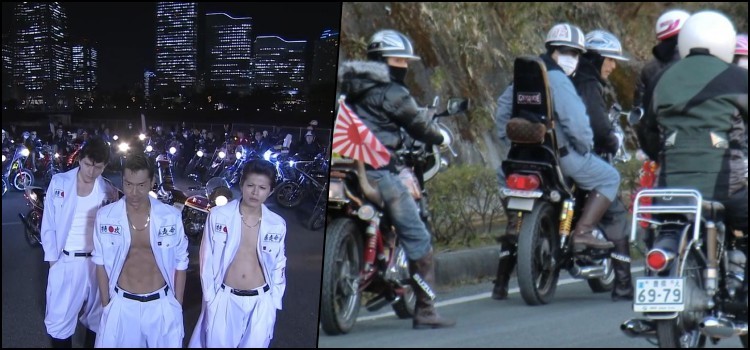
Origin and Activities of the Bosozoku
The term bosozoku (暴走族) was coined in the 1970s, and literally means "out of control tribe". They emerged in the 1950s, when Japan was recovering from the war and the auto industry was booming. Lower class youth banded together to express dissatisfaction with Japanese society at the time, forming a motorcycle gang to do so.
At that time, they called themselves kaminari zoku. The motivation behind it all was basically that typical rebellion against society's norms. But, as the bosozoku are young people under the age of majority (which is 20 years old in Japan), some ignored the fight for freedom and became bosozoku just to be part of some group.
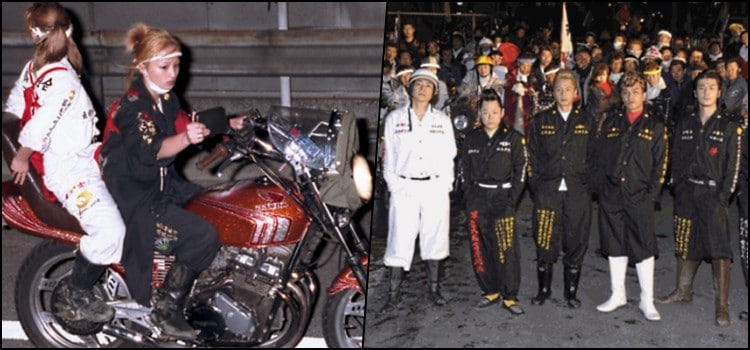
You know that youthful need to be part of a collective? So it is. They are nothing more than a Ball Club. However, it was in the 1980s and 1990s that they gained notoriety by committing serious acts of vandalism and confronting the police.
Of course they claim to do all the aforementioned acts for a good cause, which seems like a cool thing to do, but I personally don't sympathize with people who make a mistake to justify or fight others. Maybe I'm talking a little negative about the bosozoku, but I hope you don't feel offended by it.
In the year 1982, there were 42,510 bosozoku and they used to roam the streets in large numbers. Their activities consist of fixing beef, making noise with motorcycles, violating traffic laws, taking a split, among other antics to attract society's attention.
The bosozoku are a family and have principles like the members of the Yakuza.
How do Bosozoku dress?
They usually wear a uniform consisting of a jumpsuit like those worn by manual laborers, or a Tokkou-fuku (特攻服), a type of military overcoat issued with slogans written in kanji. They wear loose pants and a pair of combat boots to go with it. They decorate their motorcycles to the point where they look like they came out of a samba school or from a children's morning TV show.

Currently, the bosozoku are almost extinct for those who like silence. It all started in 2004, when the Japanese government enforced traffic laws to give police officers more power to make arrests. In 1982 there were more than 40,000 bosozoku, in 2004 the number was less than 10,000.
Government measures have caused the amount of motorcycle gang participation to decrease dramatically. Thanks to this, in 2011, the amount of 9,064 bosozoku was recorded. Currently, the bosozoku travel in small groups, and instead of riding motorcycles, they currently ride scooters.
Nowadays, some neighbors still get bothered by the noise of the bosozoku during the night. They are well portrayed in Japanese anime, doramas, and movies. It is believed that the daily distractions of the modern world have contributed to discouraging youth from getting involved with biker gangs. Most spend money on games and live in their own rooms watching anime.
From a dangerous gang, the bosozoku became a much friendlier neighborhood gang, but they are still noisy and still have their goals. Have you ever met any bosozoku? What is your experience with these wild bikers? We appreciate the comments and shares.
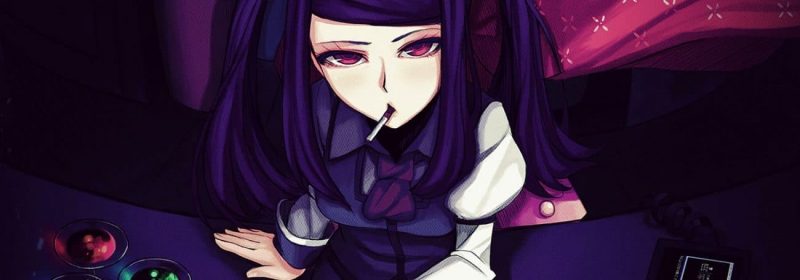
The article is still halfway through, but we recommend also reading:
Sukeban - The Gangs of Japanese Girls
Ever heard of the Sukeban [スケバン|女番], the Japanese delinquent girl gangs? To be more exact this term refers to the leader of that group. These groups were very popular in the last century. Today they are practically extinct.
This term was first used in the late 1960s. In the Yakuza and other gangs in Japan, women were almost not allowed to participate. This led to them creating their own. Currently the Sukeban, act more as a stereotype or fashion among young people. But in the past, it wasn't just that.
A writer named Jake Adelstein, an expert on crime in Japan, comments on the emergence of Sukebans. He says that due to the male-dominated culture in Japan, women were trying to find their space. the world spoke of feminism and release, which may have led these women to also feel entitled to rebel like gangs of men. We will learn more about Sukebans in this article.
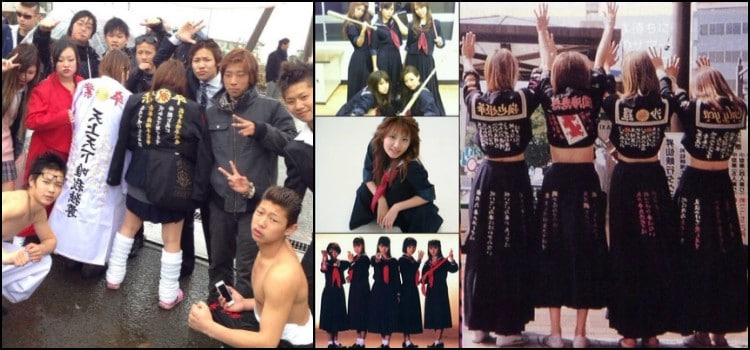
The Sukeban lifestyle
Unlike other gangs (mostly with male members) that committed crimes, and promoted fights between rival groups, the Sukeban were different. They maintained and enforced an organized and strict code of justice. Each group of girls had a hierarchy and their own means of punishment. These girls had moral values and held very firm to them.
In general, they were indicated for having their hair dyed or some bright and different hairstyle. And most always wore their school uniforms most of the time. Provocative clothes and too much makeup were frowned upon. At first, the gangs started with small groups of girls, entering schools with knives and cigarettes. But, they soon grew in number and in the level of crime. Groups range from 50 to 80 girls. However, a certain group known as the Kanto Delinquent Women's Alliance claimed to have about 20,000 members.
The Sukeban phenomenon reached its peak in the 1970s, with the emergence of the most fearsome girl group. This group called K-Ko the Razor, hailing from Saitama, Tokyo. This name refers to the weapon they used, a razor to cut throats. They wrapped it in a cloth and placed it between their breasts. No other group was more recognized than this one. Even reaching the status of urban legend.
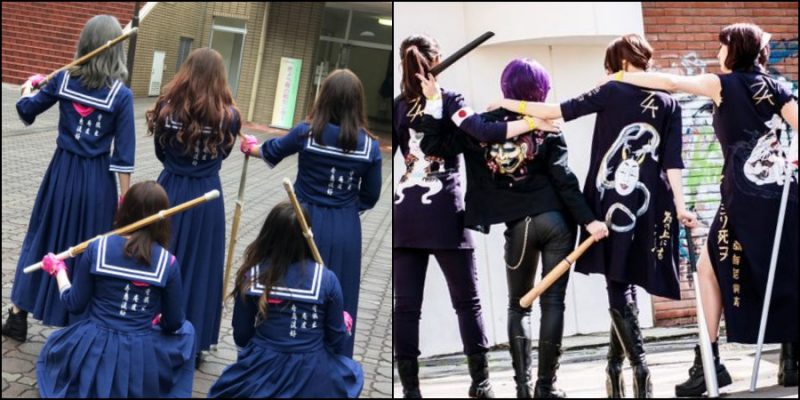
Rules, punishments and fame
Among the Sukeban groups there were many rules. And, breaking these rules was not good at all, and could result in “lynching”. Lynching involved varying degrees of punishment. Starting from a “light” punishment like applying a cigarette to bare skin. Going to apply the lit cigarette in the intimate parts, considered as a “medium” punishment.
The causes for these punishments are numerous and different, varying from gang to gang. These may include showing disrespect to older members. Talking to enemies and getting caught with drugs were also valid for punishment. But the most common cause for lynching was messing with the opposite sex.
Cheating on a boyfriend would certainly cause a lynching. These girls acted and looked older than they really were. Another surprising fact is that they were super conservative when it came to dating, romance and sex. But, as time went by, the gangs began to dwindle, and the participants integrated into society.
Even so, media has taken great advantage of this. Several movies, anime, mangas, and even games were created around the Sukebans. To this day, traces and influences of them are noticed in Japanese pop culture and everyday life.


